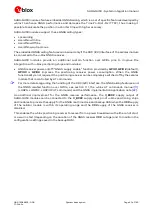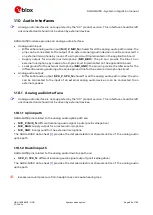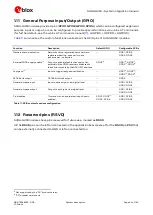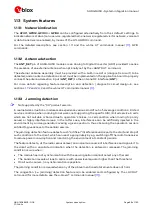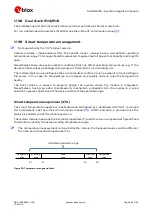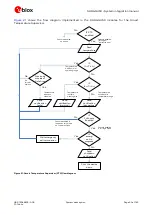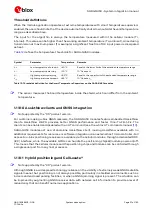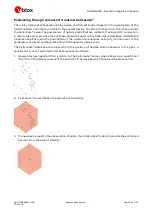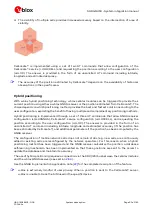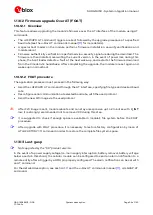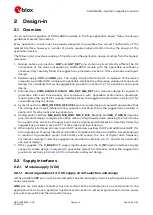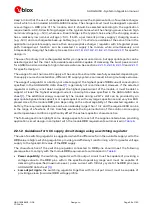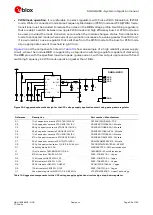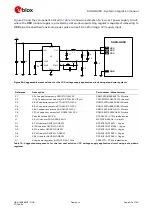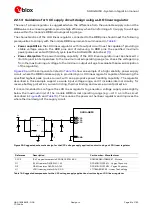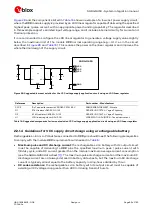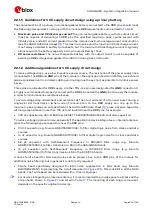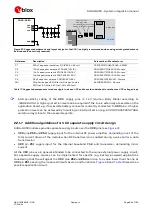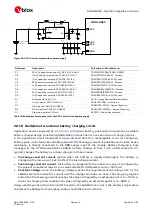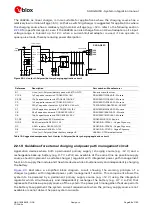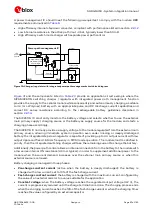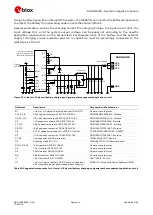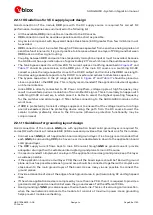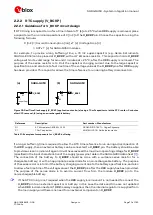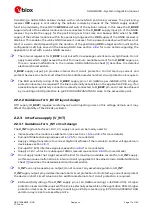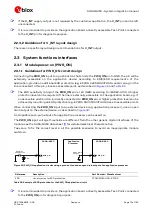
SARA-G450 - System integration manual
UBX-18046432 - R08
Design-in
Page 57 of 143
C1-Public
SARA-G450 modules must be supplied through the VCC pins by a clean DC power supply that should
comply with the module VCC requirements summarized in
The appropriate DC power supply can be selected according to the application requirements (see
) between the different possible supply sources types, which most common ones are the
following:
Switching regulator
Low Drop-Out (LDO) linear regulator
Rechargeable Lithium-ion (Li-Ion) or Lithium-ion polymer (Li-Pol) battery
Primary (disposable) battery
Main supply
available?
Battery
Li-Ion 3.7 V
Linear LDO
regulator
Main supply
voltage > 5V?
Switching step-down
regulator
No, portable device
No, less than 5 V
Yes, greater than 5 V
Yes, always available
Figure 22: VCC supply concept selection
The DC-DC switching step-down regulator is the typical choice when the available primary supply
source has a nominal voltage much higher (e.g. greater than 5 V) than the modules VCC operating
supply voltage. The use of switching step-down provides the best power efficiency for the overall
application and minimizes current drawn from the main supply source. See sections
for specific design-in.
The use of an LDO linear regulator becomes convenient for a primary supply with a relatively low
voltage (e.g. less than 5 V). In this case the typical 90% efficiency of the switching regulator
diminishes the benefit of voltage step-down and no true advantage is gained in input current savings.
On the opposite side, linear regulators are not recommended for high voltage step-down as they
dissipate a considerable amount of energy in thermal power. See sections
for specific design-in.
If the modules are deployed in a mobile unit where no permanent primary supply source is available,
then a battery will be required to provide VCC. A standard 3-cell Li-Ion or Li-Pol battery pack directly
connected to VCC is the usual choice for battery-powered devices. During charging, batteries with
Ni-MH chemistry typically reach a maximum voltage that is above the maximum rating for VCC, and
should therefore be avoided. See sections
for specific design-in.

